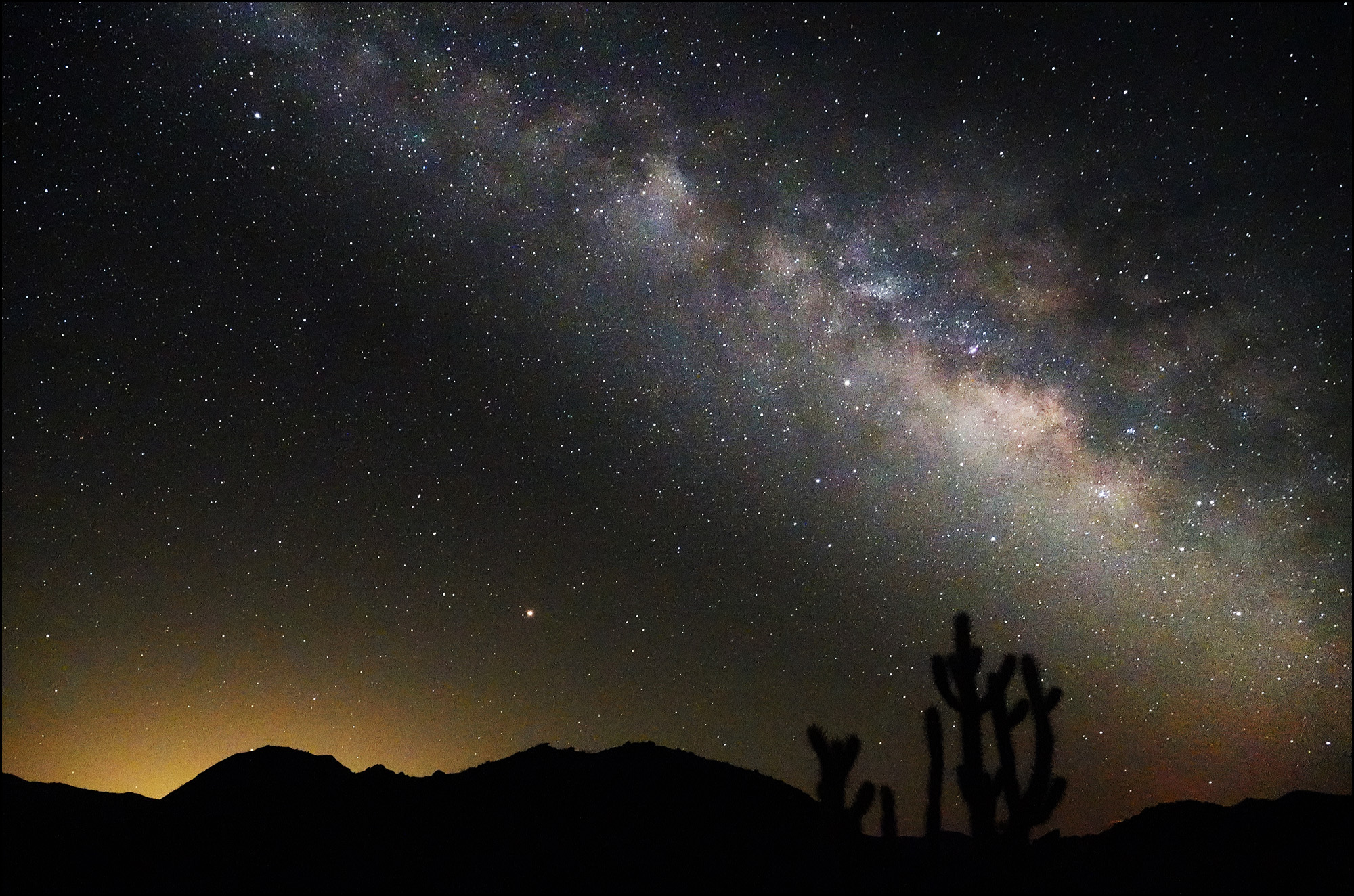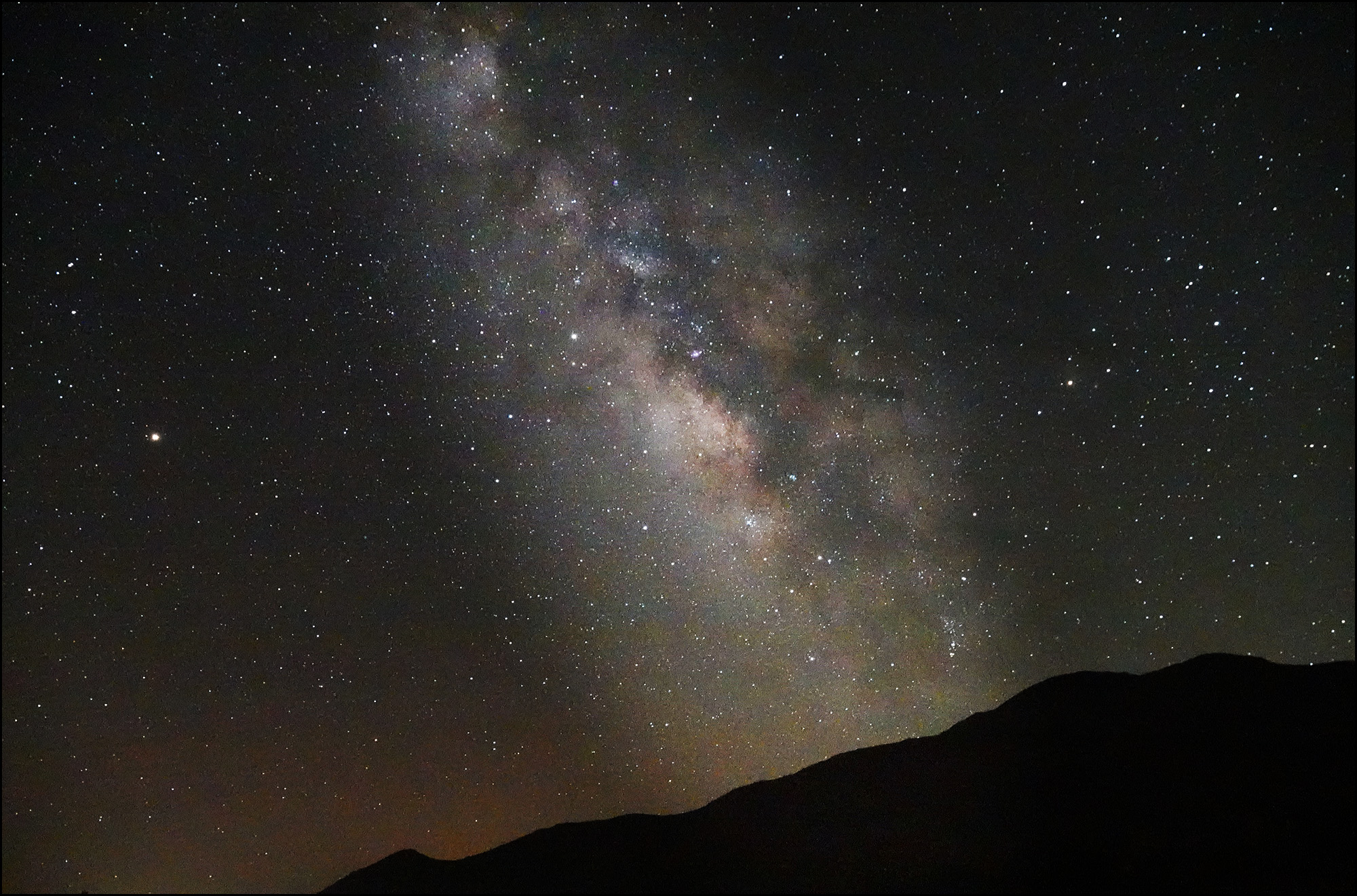As weekend readers already know, I was up all night on Saturday. Why? Because I was suddenly seized by a desire to go out to Anza-Borrego to do some stargazing. My sister-in-law had sent me a link to some Milky Way photos taken there, and it’s finally late enough in the year that the Milky Way rises at a reasonable hour. So out I went.
Unlike Ireland, which was a bust thanks to cloud cover, Anza-Borrego was great. It’s not the darkest possible place even in Southern California, but it’s pretty good. That makes this the first time I’ve ever really seen the Milky Way, and I have to say that it’s not all that spectacular to the naked eye. Maybe I was too busy with the camera to ever let my eyes truly adjust. But it was certainly a very fine photography subject.
I have two pictures of the galactic core for you. The first one was taken around 1:30 am. The (supposed) key to a great Milky Way photo is to find something interesting to contrast it with, and Anza-Borrego didn’t really offer a lot of options on this score. I tried various things, but in the end a bit of unlit cactus turned out the best:

The second shot was taken at 3 am, and by then the core had wheeled around to a more nearly vertical position:

I didn’t do anything fancy for either of these pictures. They were exposed for ten seconds with the lens wide open and ISO set to 10000. From there I popped them into Photoshop, did a modest bit of manipulation to brighten the stars and darken the background, and that was it.
POSTSCRIPT: For folks who want to geek out a little more, the big problem with Milky Way photography is noise. Because of the rotation of the earth, you can’t expose for more than 20 seconds before you start to get a bit of motion blur, and even that’s pushing it. And your lens can only open as wide as it can open. In my case that was f/2.4, but even a better camera is unlikely to go past f/2 or maybe f/1.4. That means you have to crank up the ISO to get a good exposure, and that in turn means a noisy picture. The in-camera noise reduction does a surprisingly good job, but obviously it has limits, and you can see those limits in these pictures.
For us amateurs who don’t have pricey equatorial mounts, the answer to this problem is to take a series of photos in RAW mode and then use specialized software to “stack” them. The software aligns the images, subtracts the noise by comparing them all, and then allows you to make adjustments. For you RAW fans out there, you’ll be glad to know that I did take all my shots in RAW mode, but I didn’t take a lot of identical photos from the same spot and didn’t try to stack them. Maybe another time.
Then again, maybe I should buy one of the new generation of very cheap equatorial mounts, which cost as little as a few hundred dollars these days. If I thought I was going to do this more than a few times, I’d be tempted.













